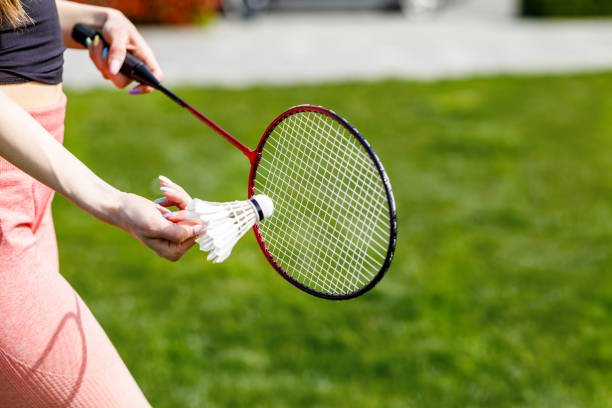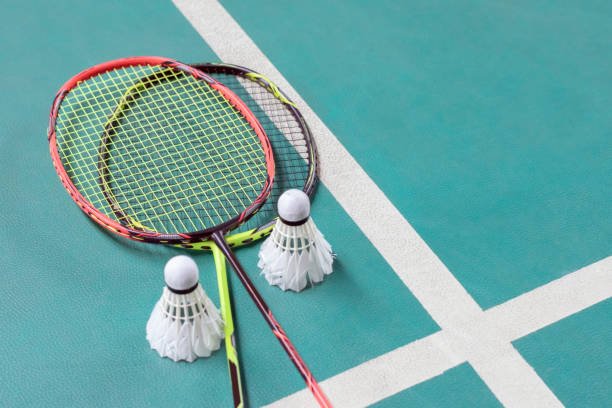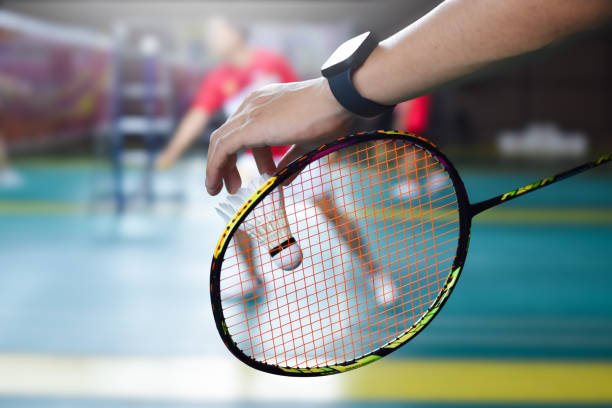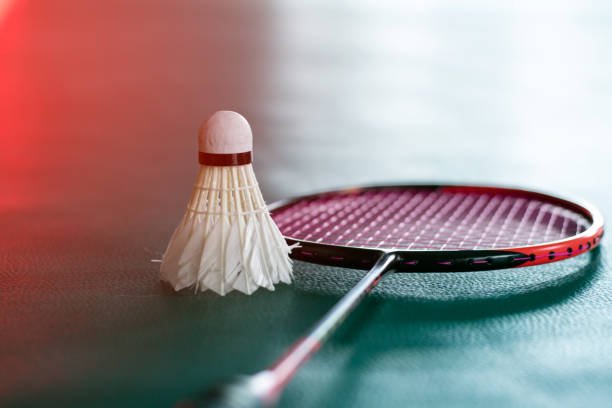Badminton is a widely popular racquet sport, enjoyed by millions of people around the world. Although the basic equipment for badminton is relatively simple—just a racket and a shuttlecock—many beginners and even experienced players often confuse the terminology. In this article, we will clarify the distinctions between badminton rackets, racquets, and badminton sticks. Understanding these terms not only helps newcomers to the sport but also provides useful knowledge for players looking to enhance their skills.
What is a Badminton Racket?

Definition and Structure
A badminton racket is a piece of sporting equipment specifically designed for badminton matches, typically composed of a frame, strings, and a handle. Its design aims to provide lightness, flexibility, and durability, enabling effective strikes against the shuttlecock during play.
- Frame: The frame of a badminton racket is usually made from high-strength materials like carbon fiber, graphite, or aluminum. High-quality rackets use carbon fiber for better elasticity and durability.
- Strings: The strings of a badminton racket are generally made from nylon or polyester, providing good elasticity and wear resistance. The tension and material of the strings directly affect the power and control of the strikes.
- Handle: The design and material of the handle directly influence comfort and control during play, often covered with non-slip materials to ensure a secure grip even in intense matches.
Features
The design features of badminton rackets include:
- Lightweight: Badminton rackets are typically very light, allowing for quick movement and response. This enables players to change the direction of their strikes rapidly and adapt to the pace of the game.
- Flexibility: Different frame designs allow badminton rackets to provide better control and power during strikes. Players can choose different racket types based on their playing style.
- Durability: High-quality badminton rackets can withstand frequent use and impact, ensuring long-term performance for players in matches.
What is a Badminton Racquet?

Definition and Terminology
"Badminton racquet" is a relatively less common term, but it actually refers to the same equipment as a badminton racket. The usage of the terms "racket" and "racquet" varies across different regions and cultures, primarily depending on personal habits and local customs. In North America, "racket" is more commonly used, while "racquet" is preferred in other regions.
Features and Function
Although the two terms can be used interchangeably, their core features and functions are the same. Badminton racquets are designed to provide players with the necessary tools to effectively strike the shuttlecock. They combine power, control, and maneuverability to allow players to perform at their best during matches.
What is a Badminton Stick?

Definition and Confusion
The term "badminton stick" is a common misnomer in the sport of badminton. It refers to implements used in various ball sports, typically applicable to paddle sports, cricket, and baseball. Referring to badminton rackets as "badminton sticks" is inaccurate, as the structure of a badminton racket is entirely different from that of a stick.
Key Differences
- Function: Badminton rackets are designed with strings, while badminton sticks are solid and lack strings. Badminton rackets are primarily used for hitting shuttlecocks, while sticks are used in other ball sports.
- Terminology Appropriateness: Using "badminton stick" to refer to a badminton racket can lead to confusion, so it is advisable to avoid this term within the badminton community.
Maintenance and Care of Badminton Rackets

Proper maintenance and care of badminton rackets are crucial for extending their lifespan and maintaining performance. Good upkeep ensures that the racket performs optimally in matches while preventing unnecessary wear.
Regular Checks
Conducting regular checks on the condition of badminton rackets is an essential step in maintaining their performance. Players are advised to perform simple inspections before and after each use, including:
- Check the Frame: Look for cracks, deformations, or damages in the racket frame. If any abnormalities are detected, it is recommended to stop using the racket and consider replacing it.
- Check the Strings: Inspect the tension and wear of the strings to ensure they are not broken or excessively worn. If the strings are loose or damaged, they should be replaced promptly.
- Check the Handle: The handle should remain dry and clean to ensure a comfortable grip. If there is wear or peeling, it is advisable to replace the grip material.
Cleaning and Storage
When cleaning and storing badminton rackets, consider the following points:
- Cleaning: Use a clean, damp cloth to gently wipe the racket, avoiding chemical cleaners or strong acidic substances. Pay special attention to the handle to remove sweat and oils.
- Storage: Avoid placing badminton rackets in direct sunlight, high temperatures, or humid environments. The ideal storage location is a cool, dry place, preferably using a dedicated racket bag for protection.
Protective Measures
To prevent damage to rackets during matches or training, some protective measures can be taken:
- Use a Racket Cover: When not in use, place the racket in a cover to protect its frame and strings.
- Avoid Impact: Try to avoid colliding the racket with hard objects during play to prevent frame deformation or damage.
Tips and Training Methods for Using Badminton Rackets

Mastering the techniques for using badminton rackets is essential for improving gameplay. Here are some basic techniques and training methods:
1. Grip Techniques
The correct grip is fundamental to enhancing striking effectiveness. Common grip techniques include:
- Forehand Grip: Suitable for most forehand strikes. Hold the bottom of the handle, palm facing the racket face, which should be facing upward. Keep the wrist flexible for better control.
- Backhand Grip: Used for backhand strikes. Hold the top of the handle, rotating the palm so the racket face faces downward. Practice is needed to improve stability and accuracy.
2. Striking Techniques
Mastering the basic striking techniques helps improve accuracy and power:
- Serve: During serving, focus on tossing the shuttlecock to an appropriate height for an easy strike. Maintain a stable body center to achieve good serving power.
- Smash: For smashing, use your whole body's power to swing the racket swiftly. Key factors include pushing off with the legs and quickly rotating the wrist.
- Drop Shot: The drop shot is a crucial technique for controlling the pace of the game. Lightly strike the shuttlecock to make it fly over the net at a low angle, forcing opponents into a difficult return.
3. Training Methods
Regular specialized training can help enhance skills. Here are some recommended training methods:
- Basic Drills: Practice repetitive serving, forehand, and backhand strikes to develop muscle memory.
- Rally Training: Practice rallies with a partner to simulate match scenarios, improving striking accuracy and reaction speed.
- Fitness Training: Badminton requires a high level of physical fitness; appropriate aerobic and strength training can enhance stamina and improve performance in matches.
Conclusion
Understanding the differences between badminton rackets, racquets, and badminton sticks is crucial for both beginners and experienced players. While "badminton racket" and "badminton racquet" can be used interchangeably, referring to badminton rackets as "badminton sticks" is incorrect.
By clarifying these terminology differences, players can enhance their knowledge and communicate more clearly and accurately within the sport. Regardless of which term you choose to use, the important thing is to select a badminton racket that suits your playing style and skill level.
We hope this article helps you gain a clearer understanding of these terms and boosts your confidence and skills in badminton. By mastering the correct usage techniques and training methods, you can fully enjoy this fun and challenging sport.